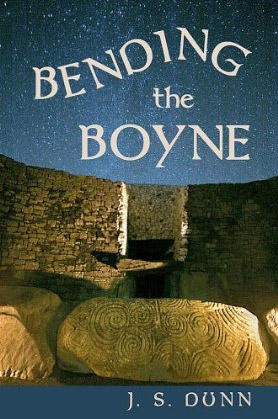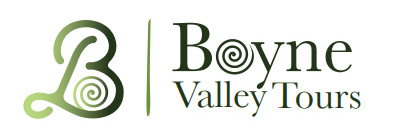Bending the Boyne, ca. 2200 BCE J.S. Dunn
 The
novel Bending the Boyne to be published in
2011 is a novel based in ancient Ireland about 2200 BCE. The author J.S. Dunn
became interested in the megaliths of the Boyne Valley and who built them and
why. With the coming of metals and marine traders, the communities and mounds
fell into disrepair. Bending the Boyne tells the story of what happened,
drawing on the rich characters from early mythology: Boann, the Dagda, Cian, and others.
The
novel Bending the Boyne to be published in
2011 is a novel based in ancient Ireland about 2200 BCE. The author J.S. Dunn
became interested in the megaliths of the Boyne Valley and who built them and
why. With the coming of metals and marine traders, the communities and mounds
fell into disrepair. Bending the Boyne tells the story of what happened,
drawing on the rich characters from early mythology: Boann, the Dagda, Cian, and others.
Purchase at Amazon.com or Amazon.co.uk
Select Bibliography
Barber, Elizabeth W. Women's Work: The First 20,000 Years. W.W. Norton & Company, New York NY, 1994.Barber, Elizabeth W., and Barber, Paul T. When They Severed Earth from Sky. Princeton University Press, Princeton NJ, 2004.
Bradley, Richard. The Prehistory of Britain and Ireland. Cambridge University Press, New York NY, 2007.
Bhreathnach, Edel, ed. The Kingship and Landscape of Tara. Four Courts Press, Dublin IR, 2005.
Brennan, Martin. The Stones of Time. Inner Traditions International, Vermont, 1994.
Budd, Paul. The Origins of Bronze Tools. British Archaeology, Issue no. 36, July 1998.
Burenhult, Goran. Carrowmore - Tombs for Hunters. British Archaeology 82 May/June 2005.
Caceres, Isabel, Lozano, Marina, and Saladie, Palmira. Bronze Age Cannabalism at Atapuerca: Evidence for Bronze Age Cannabalism in El Mirador Cave, ( Sierra de Ataperuca, Burgos, Spain). American Journal of Physical Anthropology, 133(3):899-917, July, 2007.
Capelli, Cristian, et al. A Y Chromosome Census of the British Isles. Current Biology, Vol. 13, 979-984, May 27, 2003. “Thus, the indigenous/nonindigenous distinction appears to be the most important factor determining geographic patterns of Y chromosome variation in the British isles.” At page 982.
Castleden, Rodney. The Stonehenge People. Routledge, New York NY, 1990.
Clark, Peter, ed. Bronze Age Connections: Cultural Contact in Prehistoric Europe. Oxbow Books, Oxford UK, 2009.
Cooney, Gabriel. Landscapes of Neolithic Ireland. Routledge, 2000.
Cooney, Gabriel. Newgrange - A View from the Platform. Antiquity 2006.
Cunliffe, Barry. Facing the Ocean: The Atlantic and Its Peoples. Oxford University Press, New York NY, 2001.
Dames, Michael. Mythic Ireland. Thames and Hudson.
de Blas Cortina, Miguel A. Pena Tu: la potestad transmilenaria de una roca sagrada. In La Prehistoria de Asturias Collectionable. La Nueva Espana, Oviedo, Spain, 2008.
de Blas Cortina, Miguel A. La primera mineria metalica del N. peninsular: las indicaciones del C-14 y la cronologia prehistorica de las explotaciones cupriferas del Aramo y el Milago. Complutum Extra, 6(I): 217-226, 1996.
Desmond, Angela, et al. New Agendas In Irish Prehistory: Papers in commemoration of Liz Andersen. Wordwell Ltd, 2000.
Ellis, Peter Beresford. Early Irish Astrology: An Historical Argument. Realta (Vol. 3, n. 3, 1996).
Eleure, Christiane. Prehistoric Goldwork in Western Europe. Gold Bull. 16(3): 82-91, 1983.
Eogan, George. The Accomplished Art: Gold and Gold-Working in Britain and Ireland During the Bronze Age. Oxbow Monograph 42, 1994.
Eogan, George. Excavations at Knowth. Thames and Hudson, UK 1992.
Flanagan, Laurence. Ancient Ireland: Life Before the Celts. Gill & MacMillan Ltd, 2000.
Earring found in county Down: p. 217.
Forster, P., Toth, A. Toward a phylogenetic chronology of ancient Gaulish, Celtic, and Indo-European. Proceedings National Acad. Sci. USA, 100(15): 9079-84, 2003.
Gibson, Alex. Prehistoric Pottery in Britain & Ireland. Tempus Publishing Inc., Charleston SC 2002.
Grogan, Eoin. Neolithic houses in Ireland: a broader perspective. Antiquity 76: 517-25, 2002.
Gwynn, Edward, editor and transl. Metrical Dindshenchas. 1903-35. Reprinted Dublin Institute for Advanced Studies, Dublin, IR 1991.
Herity, Michael, and Eogan, George. Ireland in Prehistory. Routledge, 1996.
Hill, Emmeline W., Jobling, Mark A., and Bradley, Daniel G. Y-chromosome Variation and Irish Origins. NATURE 404, March 23, 2000.
Institute for Ancient Equestrian Studies. Horseback Riding, Warfare, and Social Differentiation in the Eneolithic. Anthropology Department, Hartwick College, Oneonta, New York.
Ixer, R.A . The Petrography of Prehistoric pottery from Ross Island Mine. Appendix 7, In: Ross Island. Mining, Metal and Society in Early Ireland. W.O'Brien. Bronze Age Studies 6. Dept of Archaeology, Galway IR. 643-650. 2004.
Ixer, R.A. The Role of Ore Geology and Ores in the Archaeological Provenancing of Metals. In: Metals in Antiquity, Eds S.M. Young, M. Pollard, P. Budd and R. A. Ixer. Achaeopress, Oxford UK, 1999.
Levine, Marsha A. Domestication, Breed Diversification and Early History of the Horse. Paper presented at Havemeyer Foundation Workship, June, 2002.
In order to breed wild horses successfully in captivity, their environmental, nutritional and social requirements must be met:“...In zoos, juvenile male Przewalski's horses should be left in their natal bands for at least a year so that they can observe mating behaviour. They should be placed in bachelor herds when removed from the natural band, and not given harems until they are at least four or five years of age. The first mares placed with the stallion should be younger than he and the harem size should be kept small until the stallion gains age and experience.” (Boyd and Houpt, 1994, p 226) —from Levine, 2002.
Lira, Jaime, et al. Ancient DNA Reveals Traces of Iberian Neolithic and Bronze Age lineages in modern Iberian horses. Molecular Ecology 19:1, 64-78, 2010.
Mallory, J.P. and Adams, D.Q. The Oxford Introduction to Proto-Indo-European and the Proto-Indo-European World. Oxford University Press, Oxford UK, 2006.
MacKillop, James. Dictionary of Celtic Mythology. Oxford University Press, 1998.
Mac Eoin, Gearoid. What Language Was Spoken in Ireland before Irish? In: Tristram, Hildegard L.C., ed. The Celtic Languages in Contact, Papers from the XIII International Congress of Celtic Studies. Potsdam University Press, Bonn, 2007.
McEvoy, B., Richards M., Forster P., Bradley, Daniel G. The Longue Duree of Genetic Ancestry: Multiple genetic marker systems and Celtic origins on the Atlantic facade of Europe. American Journal of Human Genetics 75: 693-702, 2004.
See also:
McEvoy, B., Simms, Katharine, and Bradley, Daniel G. Genetic Investigation of the Patrilineal Kinship Structure of Early Medieval Ireland. American Journal of Physical Anthropology, 000:000-000, 2008.
McGahern, A., Edwards, C., Bower, M., et al. Mitochondrial DNA sequence diversity in extant Irish horse populations and in ancient horses. Animal Genetics 37(5):498-502, 2006.
Monna, F., Galop, D. Carozza, L., et al. Environmental impact of early Basque mining and smelting recorded in a high ash minerogenic peat deposit. Science of the Total Environment, 327(1-3): 197-214, 2004.
Nocete, F. The first specialized copper industry in the Iberian peninsula: Cabezo Jure (2900-2200 BC). Antiquity 80: 646-657, 2006.
O'Brien, William. The Bronze Age Copper Mines of the Goleen Area, County Cork. Proceedings of the Royal Irish Academy, Vol. 103C, No. 2, 13-59 (2003).
O'Brien, William. Ross Island: Mining, Metal and Society in Early Ireland. Department of Archaeology, NUI Galway, Bronze Age Studies 6, 2004.
O'Kelly, Michael J. Newgrange: Archaeology, Art, and Legend. Thames and Hudson, 1982.
O'Rahilly, T.F. Early Irish History and Mythology, 1946.
O'Sullivan, Muiris. The Mound of the Hostages, Tara. Wordsworth, 2005.
Outram, Alan K., et al. The earliest horse harnessing and milking. Science, 323-5919: 1332-1335, 2009.
Pearson, Mike Parker, et al. The age of Stonehenge. Antiquity 81: 617-639, 2007.
Peredo, Roberto Ontanon. Bell-beakers in the Cantabrian region: an archaeological phenomenon within the chalcolithic communities from northern Spain. Trabajos de Prehistoria, 60 (1): 81-98, 2003.
Raftery, Barry. Trackway Excavations in the Mount Dillon Bogs, Co. Longford 1985-1991, Dublin: Irish Archaeological Wetland Unit Transactions 3. Wordwell, 1996.
Redman, C. L. and A. P. Kinzig. Resilience of past landscapes: resilience theory, society, and the longue durée. Conservation Ecology 7(1): 14, 2003.
Renfrew, Colin. Commentary: From Molecular Genetics to Archaeogenetics. Proc Natl Acad Sci USA. 98(9): 4830-4832, 2001.
Rhys, J. The Hibbert Lectures 1886, Williams and Norgate, London, 1892.
Dagda "appears to stand for an earlier Dagodêvos, meaning the 'good god'." p154.
Rossel, S., et al. Domestication of the donkey: Timing, processes, and indicators. Proc Natl Acad Sci USA 105(10): 3715-3720, March 2008.
Ruggles, Clive. Astronomy in Prehistoric Britain and Ireland. Yale University Press, New Haven CT, 1999.
Ryan, Michael, ed. Irish Archaeology Illustrated. Town House, Dublin IR, 1994.
Scarre, Chris, ed. Monuments and Landscape in Atlantic Europe. Routledge, London UK, 2002.
Stooke, P.J. Neolithic Lunar Maps at Knowth and Baltinglass, Ireland. Journal for the History of Astronomy XXV: 39-55, 1994.
Terral, Jean-Frederic. Exploitation and management of the olive tree during prehistoric times in Mediterranean France and Spain. Journal of Archaeological Science 27(2): 127-133, 2000.
Vander Linden, Marc. What linked the Bell Beakers in third millennium BC Europe? Antiquity 81: 343-352, 2007.
Van de Noort, Robert, Middleton, Richard, Foxon, Andrew, and Bayliss, Alex. The Kilnsea-Boat, and some implications from the discovery of England's oldest plank boat remains. Antiquity 73: 131-5, 1999.
Bending the Boyne, ca. 2200 BCE © J.S. Dunn
Boyne Valley Private Day Tour
 Immerse yourself in the rich heritage and culture of the Boyne Valley with our full-day private tours.
Visit Newgrange World Heritage site, explore the Hill of Slane, where Saint Patrick famously lit the Paschal fire.
Discover the Hill of Tara, the ancient seat of power for the High Kings of Ireland.
Book Now
Immerse yourself in the rich heritage and culture of the Boyne Valley with our full-day private tours.
Visit Newgrange World Heritage site, explore the Hill of Slane, where Saint Patrick famously lit the Paschal fire.
Discover the Hill of Tara, the ancient seat of power for the High Kings of Ireland.
Book Now

Home
| Visitor Centre
| Tours
| Winter Solstice
| Solstice Lottery
| Images
| Local Area
| News
| Knowth
| Dowth
| Articles
| Art
| Books
| Directions
| Accommodation
| Contact
